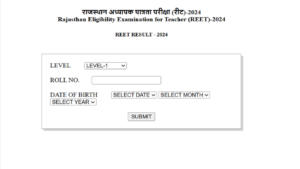Table of Contents
Social Studies is an important section for CTET, MPTET, State TET, and other teaching exams as well. Social studies is the main subject in the CTET exam Paper II. In CTET Exam, the Social Studies section comprises a total 60 questions of 60 marks, in which 40 questions come from the content section i.e.History, Geography and Political Science and the rest 20 questions from Social Studies Pedagogy section.
At least 12-15 questions are asked from the History section in the CTET Social studies section. Here we are providing important facts related to the Indus Valley Civilization.
Indus Valley Civilization (2500 BC – 1750 BC)
- The oldest name is Indus Civilization.
- According to archaeological tradition, the most appropriate name is Harappan Civilization.
- According to geographical point of view, the most suitable name is Indus and Saraswati Civilization (the largest concentration of settlement – along the Indus Saraswati river valley; 80% settlement along the Saraswati).
- John Marshall was the first scholar to use the term ‘Indus Civilization’.
- The Indus Civilization belongs to Chalcolithic Age or Bronze Age.
- The Indus Civilization was spread over Sindh, Baluchistan, Punjab, Haryana, Rajasthan, Gujarat, Western U.P. and Northern Maharashtra.
- Scholars generally believe that Harappa, Ghaggar and Mohenjodaro axis represents the heartland of the Indus Civilization.
- The Northern most site of Indus Civilization are Ropar (Sutlej), Punjab (Earlier) and Manda (Chenab), Jammu – Kashmir (Now).
- The Southern-most site of Indus Civilization are Bhagatrav (Kim), Gujarat (Earlier) and Daimabad (Pravara), Maharashtra (Now).
- The Eastern – most site of Indus Civilization is Alamgirpur (Hindon), Uttar Pradesh.
- The Western – most site of Indus Civilization is Sutkagendor (Dashk), Makran Coast (Pakistan – Iran Border).
- Capital Cities of Indus Valley Civilization are Harappa and Mohenjodaro.
- Port Cities of Indus Valley Civilization are Lothal, Sutkagendor, Allahdino, Balakot and Kuntasi.
Features of Major Cities
- Use of burnt bricks in constructions.
- Underground drainage system or giant water reservoirs in Dholavira.
- Main Crops are Wheat and Barely and Evidence of cultivation of rice in Lothal and Rangpur (Gujarat) only. Other Crops: Dates, mustard, sesamum, cotton etc.
- Animals are Sheep, goat, humped and humpless bull, buffalo, boar, dog, cat, pig, fowl, deer, tortoise, elephant, camel, rhinoceros, tiger etc.
- Agricultural products, cotton goods, terracotta figurines, pottery, certain beads from Chanhudaro, conch – shell from Lothal, ivory products, copper are Export Products.
- Iron was not known to the people of the Indus civilization.
- The Sumerian texts refer to trade relations with ‘Meluha’ which was the name given to the Indus region.
- Shatughai and Mundigaq were the Indus sites found in Afghanistan.
- The Harappans were the earliest people to produce cotton. It was called ‘Sindon‘ by the Greeks.
- Lothal was an ancient port of Indus civilization.
- The Indus Civilization was primarily urban.
- The Harappan people didn’t worship their gods in temple. An idea of their religion is formed from the statues and figurines found.
- The most commonly found figurine is that of Mother Goddess Matridevi or Shakti. There is evidence of prevalence of Yoni
- The chief male deity was the ‘Pasupati Mahadeva’. the lord of Animals represented in seals as sitting in yogic postur. he is surrounded by four animal elephant, tiger, rhino and buffalo and two deer appear at his feet. There was the prevalence of the lingam
- The animal worship and tree worship esp. peepal were in vogue in those days.
- There is the evidence of pictographic script, found mainly on seals.
The oldest script in Indian subcontinent is the Harappan script, but the oldest deciphered script is Brahmi script known from about 5th century BC. The Most-later Indian script developed from Brahmi.


 REET Result 2025 PDF Declared @reet2024....
REET Result 2025 PDF Declared @reet2024....
 CG Vyapam Pre BED Admit Card 2025 Out To...
CG Vyapam Pre BED Admit Card 2025 Out To...
 CG Vyapam Pre DELED Admit Card 2025 Out ...
CG Vyapam Pre DELED Admit Card 2025 Out ...














